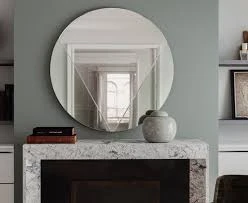

The Price of Heat Reflective Glass What You Need to Know
In recent years, the demand for energy-efficient building materials has surged as more individuals and organizations seek to minimize their environmental impact and reduce energy costs. Among the various materials available on the market, heat reflective glass has emerged as a popular choice for both residential and commercial properties. However, one aspect that interests many consumers is the price of heat reflective glass. Understanding the factors that influence the cost can help buyers make informed decisions when investing in energy-efficient solutions.
What is Heat Reflective Glass?
Heat reflective glass is designed to minimize heat transfer while allowing natural light to enter a building. It achieves this through a special coating that reflects a significant portion of solar radiation, thereby reducing the amount of heat that enters a space. This not only enhances comfort indoors but also decreases reliance on air conditioning, leading to lower energy bills. The benefits of heat reflective glass are numerous, including improved thermal comfort, reduced glare, and increased safety through shatter resistance.
Price Factors
Several factors contribute to the pricing of heat reflective glass. These factors include
1. Type of Glass There are various types of heat reflective glass, including double-glazed and triple-glazed options. Double-glazed units consist of two panes of glass separated by a spacer and filled with argon gas for insulation, while triple-glazed units offer even greater energy efficiency. Generally, the more advanced the glass technology, the higher the price.
2. Coating Type The type of reflective coating applied to the glass can significantly affect its price. Low-emissivity (Low-E) coatings, for example, are a popular option because they enhance insulation properties. Additionally, the specific materials used in the coating can impact costs, with some coatings more expensive due to their superior performance.
3. Customization Many manufacturers offer customization options, such as specific tinting, size, or thickness requirements. Custom glass can increase the overall cost depending on the complexity and requirements involved in production.

4. Brand and Manufacturer Brand reputation and quality can also play a role in pricing. Well-established manufacturers with a track record of producing high-quality products may charge a premium for their materials due to their reliability and performance guarantees.
5. Installation The cost of installation should not be overlooked. Professional installation can add significantly to the overall expense, especially if modifications to the existing structure are required to accommodate the new heat reflective glass. Installation costs may vary based on regional labor rates and the complexity of the job.
Average Prices
On average, the price of heat reflective glass can range widely based on the previously mentioned factors. Basic heat reflective glass may start at around $25 to $50 per square foot, while more advanced options like triple-glazed units can reach upwards of $100 per square foot or more. When factoring in installation, total project costs can escalate, making it essential for consumers to budget accordingly.
Long-Term Savings
While the initial investment in heat reflective glass may be higher than standard glazing options, many homeowners and businesses find that the long-term savings on energy bills and increased comfort outweigh the upfront costs. Additionally, certain regions offer incentives or tax credits for using energy-efficient materials, making the investment more attractive.
Conclusion
Investing in heat reflective glass offers numerous benefits, from reducing energy consumption to enhancing indoor comfort. Understanding the pricing dynamics is crucial for making informed decisions. By considering factors like glass type, coating, customization needs, and installation costs, potential buyers can better navigate the market and choose the product that best meets their needs and budget. As energy efficiency becomes an increasingly vital concern, heat reflective glass will continue to be a key player in sustainable building practices, proving that a higher upfront cost can lead to significant long-term savings and benefits.